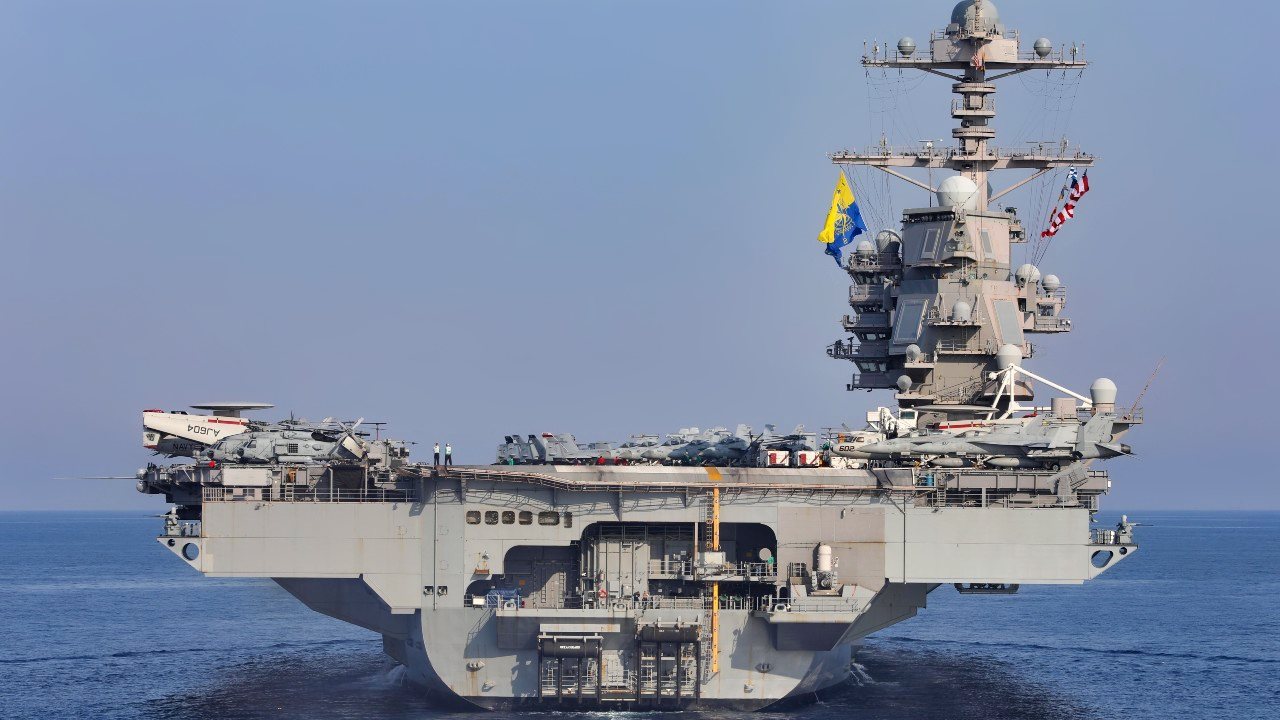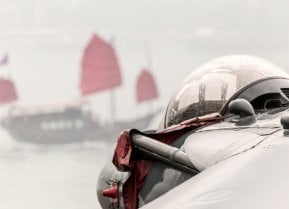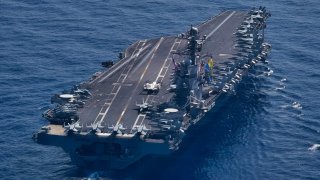The U.S. Navy's New Ford-Class: The Worst Aircraft Carrier Ever
The United States Navy remains heavily invested in aircraft carriers, with the new Gerald R. Ford-class intended to replace the aging Nimitz-class. However, these new carriers are costly, over-budget, and fraught with technological issues, raising concerns about their effectiveness in modern warfare.
Summary and Key Points: The United States Navy remains heavily invested in aircraft carriers, with the new Gerald R. Ford-class intended to replace the aging Nimitz-class. However, these new carriers are costly, over-budget, and fraught with technological issues, raising concerns about their effectiveness in modern warfare.

-Critics argue that these carriers are highly vulnerable to anti-ship and anti-access/area-denial (A2/AD) systems, particularly those developed by China.
-The USS Gerald R. Ford, the lead ship of its class, exemplifies this problem, costing $12 billion and potentially being unable to survive its first contact with advanced enemy systems. The continued investment in these carriers may prove wasteful and dangerous without addressing the evolving threats they face.
Costly Missteps: Why the Gerald R. Ford is the Worst Carrier in US History
The United States has committed itself to the aircraft carrier. Ever since the flat top proved itself in the crucible of the Pacific Theater in the Second World War, the carrier became the primary capital ship for the US Navy’s surface fleet. Indeed, these systems continue to wow observers, what with their increasing size, complexity, and staying power (thanks to the inclusion of nuclear reactors).
When faced with permissive environments these grand warships of the republic can deploy unspeakable firepower via their large airwing. These boats can also apply land power directly via the deployment of Marine units.
But what happens when these ships encounter truly contested environments and anti-ship or anti-access/area-denial (A2/AD) systems that can utterly stymie the ability of these floating cities to effectively deploy their vast power upon targets?
Well, these questions have apparently never really been asked among the eggheads at the Pentagon because the Americans keep doubling-down-and-tripling-down on America’s massive investment of a system that might not be able to survive its first contact with enemy (notably Chinese) A2/AD systems.
Absolutely no forethought seems to have been given to such strategic quandaries. That’s why the Navy is heavily committed to the long-term project of building wildly expensive units belonging to the new Gerald R. Ford-class aircraft carriers.
These units will eventually replace the aging Nimitz-class carriers that currently comprise America’s fleet of flat tops.
The Gerald R. Ford is Not Worth the Headache
When someone asks this author what the worst US carrier in history is, I do not hesitate to answer. The worst flat top in American history is the most complex, most expensive, and most likely to be either severely damaged or sank in combat.
That’s the USS Gerald R. Ford.
Coming in at $12 billion to build (over-budget, I might add) and late—while still experiencing multiple technological complications, due to all the advanced systems the Navy threw into this platform—what the Pentagon is telling Americans is that the face of war has remained unchanged in the last 80 years.
Of course, that’s a ridiculous notion.
But why should an elephantine bureaucracy be made to live in painful reality when easy money dulls the senses and numbs the reasoning centers of those charged with our national defense?
Yes, the Gerald R. Ford, as well as its sister ships will be imbued with a coterie of defenses. Ultimately, however, the fundamentals of the engagement have changed and no longer favor the continued US investment into flat tops.

For a fraction of the cost of one of these obscene Gerald R. Ford-class aircraft carriers, the Navy could be investing in systems meant to overcome the threat that A2/AD poses to its various surface warships.
Alas, the money is going into expanding the carrier force. And no matter what defensive countermeasures the new carriers have, they cannot stop the massive arsenals of Chinese A2/AD systems from penetrating their defense screens (in fact, A2/AD systems are specifically designed to swamp the warship’s defenses).
Even the Houthis are Getting Involved
Heck, the recent experience of the older Nimitz-class aircraft carrier, the USS Dwight D. Eisenhower against the Iran-backed, Yemen-based Houthi Rebels, gave the Navy significant pause.
After all, this rag-tag band of terrorists living in the dunes and among the caves of Yemen possess relatively advanced anti-ship missiles that do pose a danger to the sprawling leviathans that are American carriers.
In May of this year, in the conduct of sweeping airstrikes against Houthi targets along with elements from the United Kingdom, the Houthis responded to the airstrikes by firing off an anti-ship missile that was targeting the Ike. At the time of that attack, the Houthis made the claim that they scored multiple, direct hits upon the legendary American carrier.
The Navy, of course, denied this. And it has since been confirmed that the carrier was seen in a friendly port with absolutely nothing in the way of the kind of damage the Houthis claimed.
Nevertheless, the carrier was quietly repositioned away from the Yemeni coastline after those airstrikes—despite the fact that the Houthi threat to international shipping both in the Strait of Bab-el Mandeb and the Red Sea persists today (in fact, it has worsened since the carrier redeployed out of the area). The Ike has yet to be returned to the area. This is obviously because it is too hot to risk even an older carrier, like the Ike.
What happens when the futuristic USS Gerald R. Ford goes up against the far larger and more advanced A2/AD arsenal belonging to China?
Aircraft Carriers: Where Do We Go From Here?
So, when I’m asked about the worst carrier in the Navy’s history it’s the one that cost an arm-and-a-leg and could end up costing the lives of thousands of sailors and Marines serving aboard this warship. Some people have commented that old ships, like the prewar USS Wasp, constitute the worst carrier.
And there’s certainly merit to that claim.
But, for me, there is no system that is more wasteful or whose loss is possibly debilitating (because of how much we’ve invested in this platform) than the USS Gerald R. Ford. It was unnecessary to build these warships in the age of A2/AD without at least first developing methods for reliably overcoming that threat.

Author Experience and Expertise: Brandon J. Weichert
Brandon J. Weichert, a National Interest national security analyst, is a former Congressional staffer and geopolitical analyst who is a contributor at The Washington Times, the Asia Times, and The-Pipeline. He is the author of Winning Space: How America Remains a Superpower, Biohacked: China’s Race to Control Life, and The Shadow War: Iran’s Quest for Supremacy. His next book, A Disaster of Our Own Making: How the West Lost Ukraine, is due October 22 from Encounter Books. Weichert can be followed via Twitter @WeTheBrandon.
All images are Creative Commons or Shutterstock.
From the Vault
Russia Freaked Out: Why the U.S. Navy 'Unretired' the Iowa-Class Battleships
Battleship vs. Battlecruiser: Iowa-Class vs. Russia's Kirov-Class (Who Wins?)


